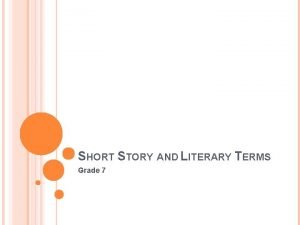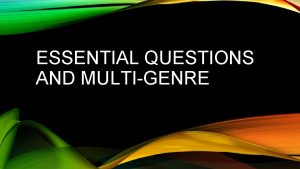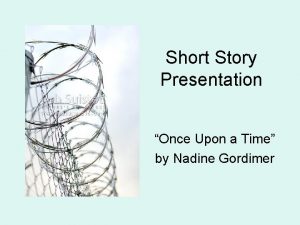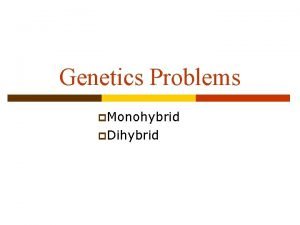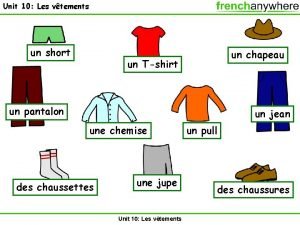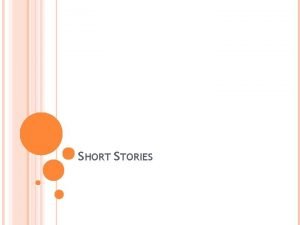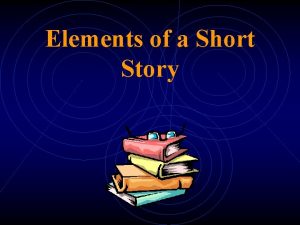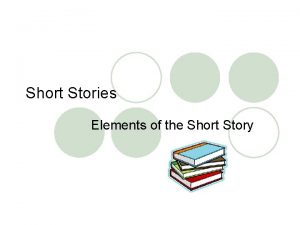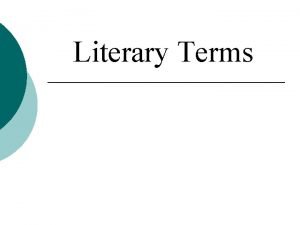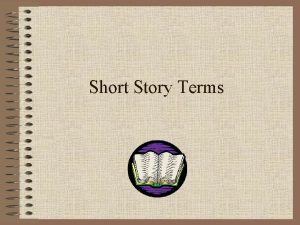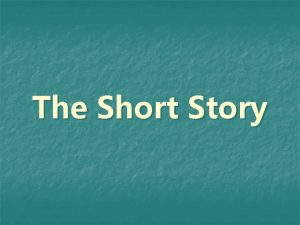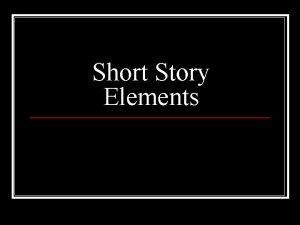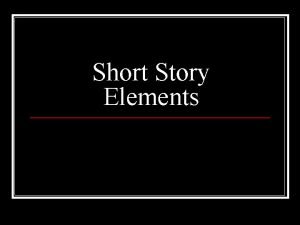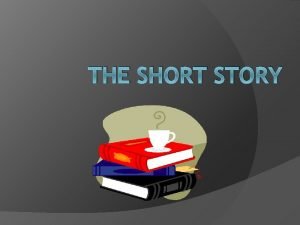SHORT STORY UNIT What is a short story



















- Slides: 19

SHORT STORY UNIT

What is a short story? Have you ever read a short story? What are the parts of a short story? If so, which one?

Short stories usually lack detail. Short stories are brief. Short stories use P. A. C. T. S. to establish the narrative. P. A. C. T. S consists of the elements of a short story.

What is P. A. C. T. S ?

P. A. C. T. S Short stories use P. A. C. T. S to build the narrative. Although short stories may use all of the aspects of P. A. C. T. S, the author may choose to focus on any one of these elements: � Plot � Atmosphere � Character � Theme � Setting

P lot The plot is essentially what the story is about. A short story usually has one main plot. This means that there is one conflict within the story.

A tmosphere There is usually one overall feeling in a short story. This feeling is the atmosphere.

C haracters There are usually only a few characters introduced in a short story. In a short story the reader does not receive extensive information about the characters. The reader is only told what is important. Protagonist- the main character in the story. Antagonist- is the person or force that challenges or confronts the protagonist.

T heme The theme is the meaning or message of a literary work. The theme is a sentence that expresses an opinion.

S etting The setting informs the reader of the time and place that the events of the literature take place.

PLOT GRAPH What is a Plot Graph?

PLOT GRAPH 4 5 3 2 1 6

THE PLOT GRAPH The plot graph labels the parts of a short story with six aspects. Introduction, Inciting Incident, rising action, climax, denouement, and resolution are all parts of a short story that are labelled on the plot graph.

1) INTRODUCTION The beginning of the literature. The introduction is exactly what the word implies, it introduces the characters, setting, and it may introduce the conflict.

2) INCITING INCIDENT Otherwise known as the causative incident. This is the incident in the narrative that causes the conflict or action to occur.

3) RISING ACTION The rising action builds the readers the suspense through a series of crises.

4) CLIMAX This is the part in the plot where the conflict escalates to the point of no return. When the story reaches a climax the conflict can no longer evolve and will begin to resolve. The climax is the turning point of the plot.

5) DENOUEMENT Otherwise known as the falling action. It is the part of the narrative when the conflict begins resolution.

6) RESOLUTION The resolution or the conclusion of the plot. The conflict is resolved, ads loose odds and ends are tied.
 Long and short
Long and short Inspirational moral stories
Inspirational moral stories Unit 6 review questions
Unit 6 review questions Short story unit
Short story unit Short story unit
Short story unit Short story unit test
Short story unit test Grade 7 short story
Grade 7 short story Short story essential questions
Short story essential questions Summary of once upon a time by nadine gordimer
Summary of once upon a time by nadine gordimer Hh
Hh Short unit
Short unit Metode pembiayaan semi langsung
Metode pembiayaan semi langsung How to label hyp opp adj
How to label hyp opp adj Si unit to english unit
Si unit to english unit Unit 1 test algebra 2 answers
Unit 1 test algebra 2 answers Perhitungan unit cost rekam medis
Perhitungan unit cost rekam medis Unit process and unit operation
Unit process and unit operation Unit operation and unit process
Unit operation and unit process Kerangka konseptual standar akuntansi pemerintahan
Kerangka konseptual standar akuntansi pemerintahan Exposition
Exposition






